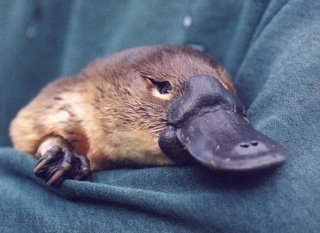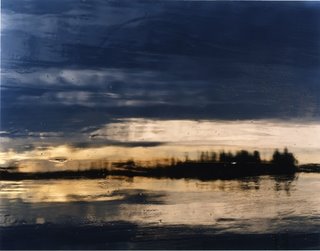A platypus:

Once again I find myself enamored by an animal that only lives in Australia.
I don't know what started this recent obsession, but early this week I found myself trolling through Google images looking at adorable
baby platypuses (yes, that really is the plural).
The
Eastern part of Australia is the only place where Playpuses can be found in the wild, which is really perfect since that has become my travel destination of choice (or compulsion, really— I think Melbourne could be my new favorite city). They were introduced to
Kangaroo Island and now thrive there, as well, making it home to all my favorite animals except chimps (
see post from Jan 27).
Together with the four species of echidna, the playpus is one of only five species of monotremes, mammals that lay eggs instead of giving birth to live young. Platypuses spend as much as 12-hours a day in the water but sleep in burrows on the riverbank not far from the water mark and usually hidden by roots or plants. A platypus' "bill" is not a beak like a duck's, it's actually a sensory organ with the mouth on the underside and nostrils on the dorsal surface.
The craziest thing about the platypus is that males have venomous ankle spurs that can kill smaller animals. The venom isn't lethal to humans, but it does produce excruciating pain that can incapacitate the victim. That's why I'll be adopting a female for myself.


